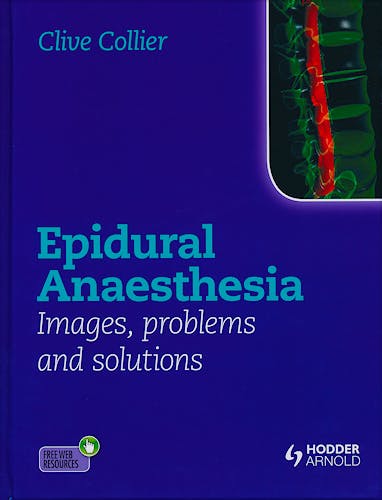

No hay productos en el carrito



Epidural Anaesthesia. Images, Problems and Solutions
Collier, C.
1ª Edición Enero 2012
Inglés
138 pags
1000 gr
20 x 25 x 1 cm
ISBN 9781444156041
Editorial Hodder Education
LIBRO IMPRESO
-5%
220,66 €209,63 €IVA incluido
212,17 €201,57 €IVA no incluido
Recíbelo en un plazo de
2 - 3 semanas
Summary:
Epidural Anaesthesia: Images, Problems and Solutions brings together the most comprehensive collection of post-block epidurograms in the world into a single volume. With accompanying X-rays and contrast injection images, it clearly explains why an epidural block has failed and provides practical advice on how to avoid complications in the future.
Key features:
- Contains over 180 clearly labelled X-rays and contrast injection images to help you learn using these examples
- Uses X-rays and contrast injection images rather than more complex imaging technologies, to allow quick assessment of blocks in the most basic radiology department
- Written by a world-renowned expert, providing consistency of style and approach throughout
- Companion website contains downloadable images as well as moving X-rays of contrast injection, 3D reconstructions and explanatory cartoons
This unique book for specialist and trainee anaesthetists demonstrates, with simple X-rays and contrast injection, why epidurals are occasionally imperfect. Epidural Anaesthesia: Images, Problems and Solutions will enable you to refine your technique and avoid adverse outcomes in practice.
- Brings together the world's largest and most comprehensive collection of epidurograms
- Written by an expert of world renown, providing consistency of approach throughout
- Fully illustrated with over 180 clearly labelled X-rays and contrast injection images to help you learn using these examples
- Uses X-rays and contrast injection images rather than more complex imaging technologies, to allow quick assessment of blocks in the most basic radiology department
Table of Contents:
- Preface
- Acknowledgements
- Chapter 1 Introduction: Why investigate atypical epidural blocks?
- Chapter 2 The technique of epidurography
- Chapter 3 The typical epidurogram
- Chapter 4 Complicated epidural blocks
- Chapter 5 The subdural and intradural spaces
- Chapter 6 Failed epidural blocks and misplaced catheters
- Chapter 7 Failed epidural blocks due to an obstructive septum
- Chapter 8 Spinal deformity and epidural block
- Chapter 9 An assessment of epidural catheters: the role of epidurograms
- Chapter 10 Conclusions
- Index
About the Author(s):
Clive Bourn Collier MD, MRCP, FRCA, FANZCA, Visiting Obstetric Anaesthetist, Prince of Wales Private Hospital, Barker Street, Randwick NSW 2031, Australia
Clive Collier is senior specialist anaesthetist at The Prince of Wales Private Hospital in Sydney, having previously been the Director of Anaesthetics at The Women's Hospital (Crown Street). He is one of the most highly qualified and experienced obstetric anaesthetists worldwide, with more than 36 years in the speciality, and personal experience of more than 20,000 epidural and spinal blocks. He has lectured widely and published almost 80 articles in the medical literature, as well as authoring two books.
Readership: This book is aimed at specialist and trainee anaesthetists, particularly in the field of obstetric anaesthesia
Reviews:
"I personally gained a much better understanding of the factors which influence the spread of local anaesthetics within the epidural space after having read his book."
LAH Critchley, Anaesthesia and Intensive Care
© 2025 Axón Librería S.L.
2.149.0